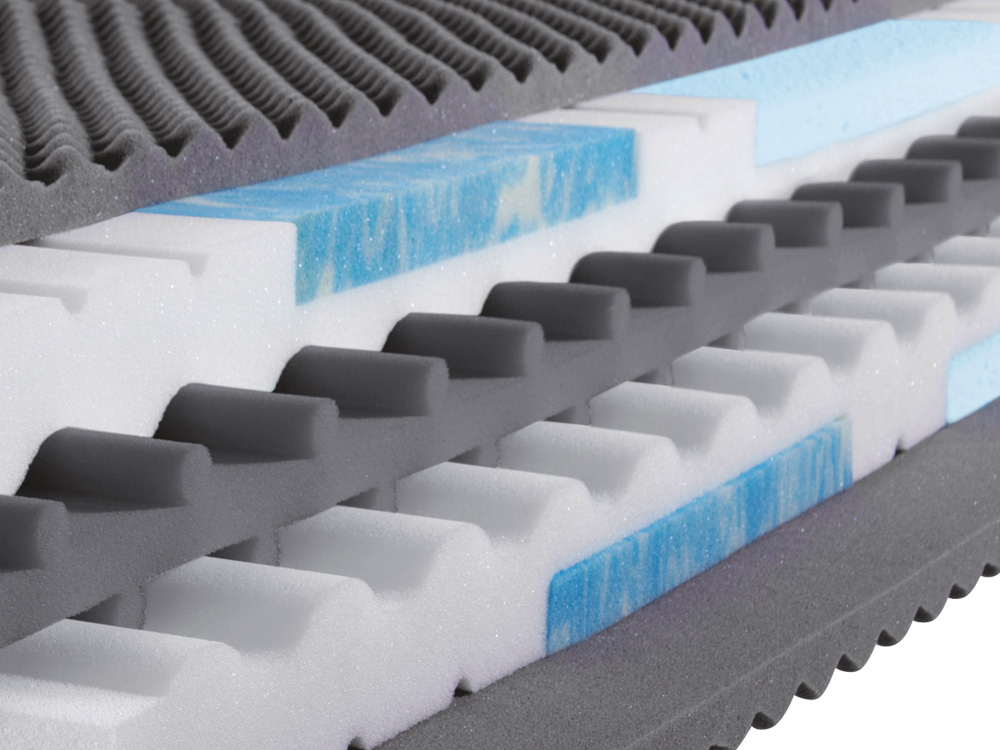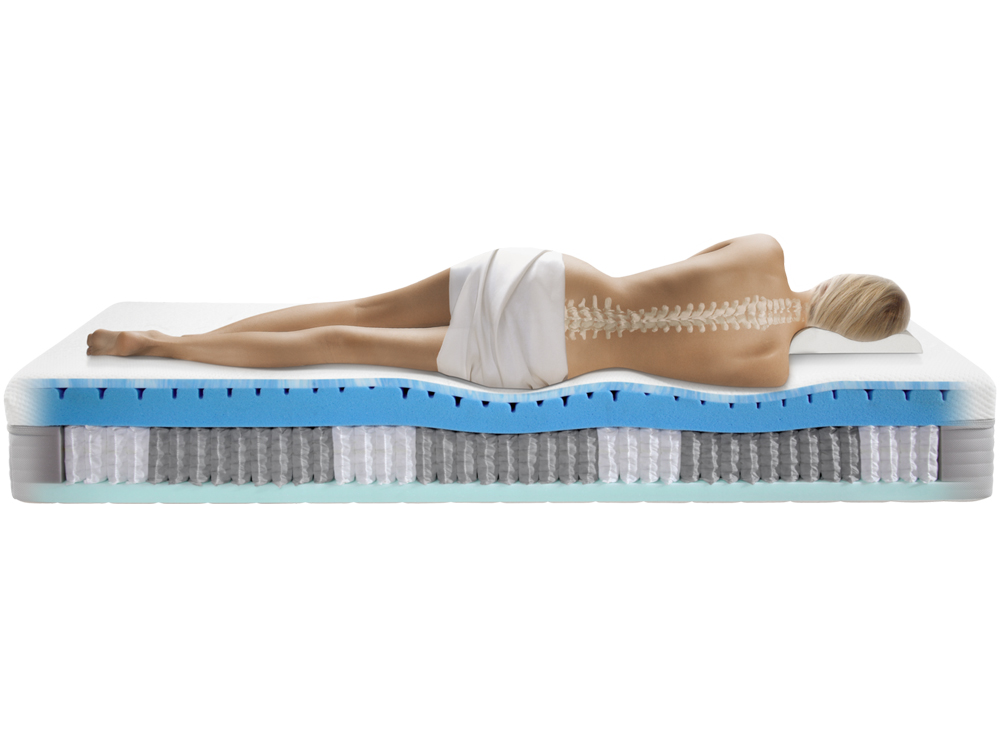What are zoned mattresses? What are hardness levels actually for?
There’s a saying: “As you make your bed, so you must lie on it.” Your choice of mattress is as individual as you are. What’s your favourite sleeping position? On your stomach, back or side? Together with your weight, build and preferences, your sleeping habits dictate which mattress will give you optimum sleeping comfort. It is crucial to strike the right balance between a comfortable feeling of sinking into the mattress and a good support strength. Different hardness levels and different zones can help here – but how does it work exactly?
Zoned mattresses: Lie properly from head to toe
3, 5, 7 or even 9 zones? The idea behind zoned mattresses is to subdivide the mattress according to specific body parts, such as the neck, shoulders, lumbar vertebrae, pelvis and thighs. These different zones have different weights and therefore require different levels of relief. “The zones are customised so that the mattress is either yielding or supporting in the right places”, explains Romeo David, who is responsible for mattress product development at ADA. Different materials with specific firmness levels, incisions in the mattress core or different surface profiles are used to achieve this. “This allows the mattress to adapt to your body contours. Your body weight is evenly distributed, and you can rest well at night.”


Optimum adaptation of the mattress to the sleeper thanks to different materials, firmness levels and surface profiles.
7-zone mattress: The heavy parts of the body, such as the shoulders and pelvis, sink into the mattress, allowing the spine to retain its natural shape.
What’s most important is that the zones are arranged correctly and that their levels of hardness are coordinated to meet the body’s needs. For example, the shoulder zone must be softer so that you can sink into the bed sufficiently when lying on your side. In contrast, the lumbar and pelvic zones are firmer so you get the support you need in those areas. When choosing the right mattress for you, bear this in mind: a mattress with many different zones does not automatically guarantee better lying comfort. If you have a more or less even build, you will probably be fine with a moderate number of zones. If you have pronounced contours, such as broad shoulders, and also prefer to lie on your side, more pronounced zones may improve the quality of your sleep.
Hardness levels: Between sinking and support
The body recovers best at night when the spine is relieved and retains its natural shape when lying. This is where the hardness level comes into play. It determines how your spine is supported. In a nutshell: if the mattress is too soft, the body sinks in too much – the spine sags. If the mattress is too hard, certain parts of the body do not sink in – the spine doesn’t get the relief it needs and adopts an unnatural position. In both cases, muscle tension and back pain may result.
“But your physique and therefore your weight distribution, your preferred sleeping position and your individual sensibilities also play a role.” The basic rule: the lower the hardness level, the softer the mattress. But beware: hardness levels are not standardised and may therefore differ according to the manufacturer. Trying out the mattress is strongly recommended!
Hardness level recommendations for ADA mattresses:

- H1 (soft) up to approx. 50 kg
- H2 (medium firm) up to approx. 80 kg
- H3 (firm) up to approx. 100 kg
- H4 (extra firm) up to approx. 120 kg
- H5 (heavy-weight mattress) up to 140–150 kg
